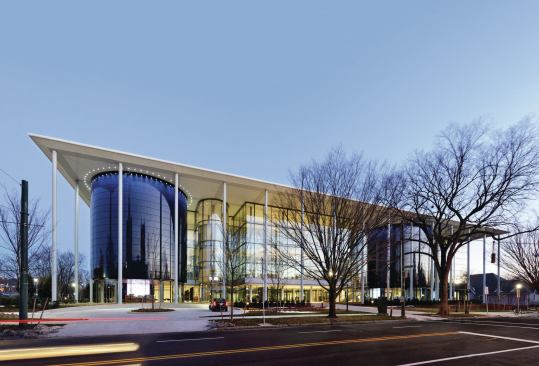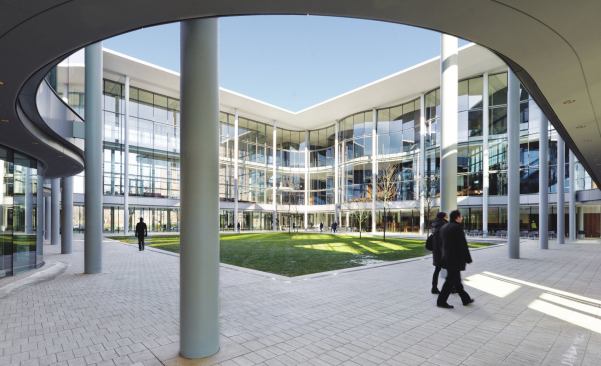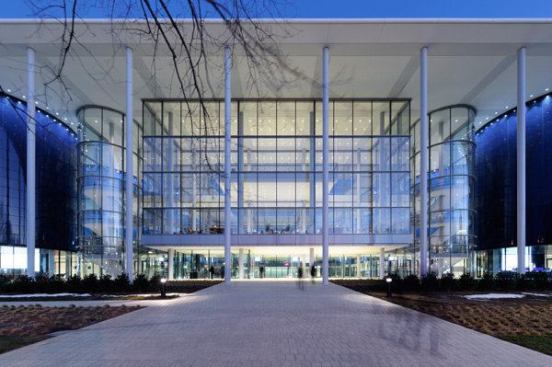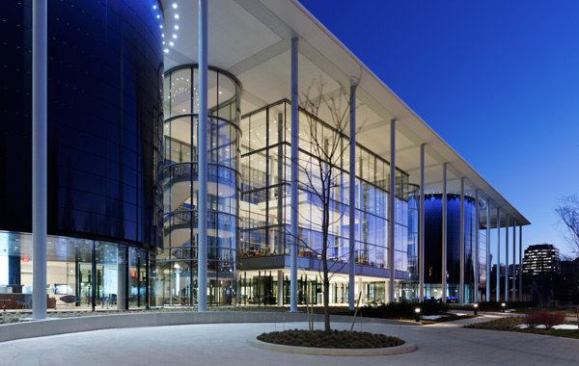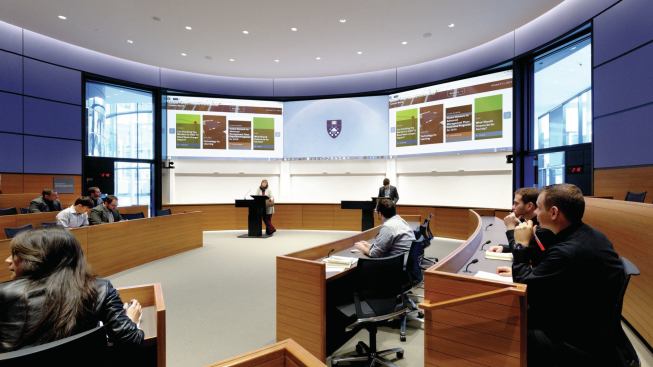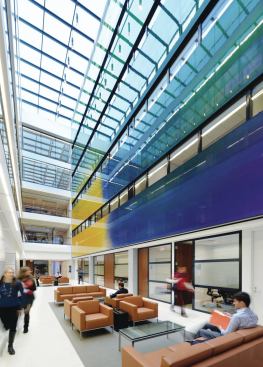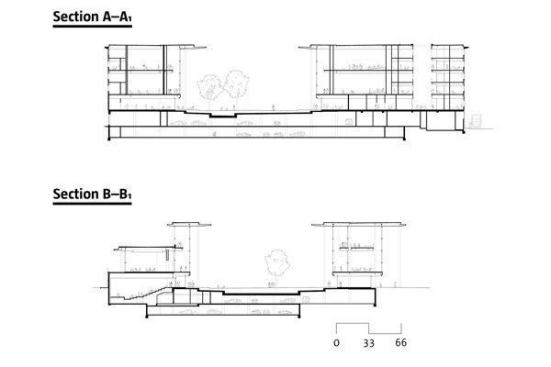Project Description
One of the more intriguing lost chapters in modern architectural
history is the period of time that 1962 Yale School of Architecture
graduate Norman Foster, Hon. FAIA, spent studying with Paul Rudolph.
Other than the 1963 Creek Vean House—a
semi-subterranean concrete-block fugue designed with fellow Yalie
Richard Rogers, Hon. FAIA, for the latter’s then-in-laws—it’s hard to
see much of the Brutalist master’s heavy hand and gorgeous gloom in
Foster’s subsequent output of determinedly lightweight and relentlessly
sunlit glass-and-steel buildings.
The latest in this succession is, fittingly, back in New Haven, Conn.:
Edward P. Evans Hall, the new home of the Yale School of Management,
which opened in January. At 249,743 square feet and a reported $189
million, the building assembles the school’s formerly scattered
facilities, which serve some 300 students, around a grassy little
courtyard and under one deeply overhanging roof. Monumentally shiny and
not especially subtle, the building is closer in geography and spirit to
the nearby Eero Saarinen and Philip Johnson buildings on Yale’s
peripheral science and athletic campuses than it is to the dense Rudolph
and Louis Kahn masterpieces at the university’s heart.
Foster’s recent work generally divides itself between the latently
classical and the retro-futuristically biomorphic. Evans Hall tends
toward the former, with—somewhat in the manner of the architect’s 1993 Carré d’Art at Nîmes,
France—a row of 15 tall and slender columns (some 60 feet high on
25-foot centers) along its entrance façade. Set back behind that
colonnade, under a pale canopy, is a deeply modulated glass curtainwall.
The modulations are informed by Foster’s signature half-circle stair
landings and a boxy reading room, as well as the perimeter expressions
of interior elliptical volumes that add a touch of the biomorphic to the
plan. On the ground floor, these drum-like elements house a coffee shop
and commons. On two double-height upper levels, they enclose 16
generously scaled classrooms. Their deep blue cladding, visible through
the glass façade, is vanishingly close to the signature Pantone 289 of
Yale’s heraldry. Aligned with the main entrance across the courtyard is a
semi-elliptical 350-seat auditorium and event space.
The ovoid geometry propagates toward the central courtyard’s glazed
walls, which wiggle in and out along the north and south sides. This
curvaceousness ensures some sparkle in varied daylight, directs the
drift and flow of students and faculty through the adjacent circulation
space—and presumably encourages the serendipitous encounters and
spontaneous gatherings on which good management relies in this era of
wearable technology and flat organizational charts.
Today’s corporate and academic campuses favor breakout spaces—nooks,
perches, lounges, cafés—as architectural expressions of the
reconfigurable formlessness characteristic of adaptive and
technologically driven organizations. In Foster’s well-populated
renderings of Evans Hall, each area between the elliptical classrooms
and curved glazing features lively gatherings on banana-shaped
furnishings—evoking something between a conversation pit and an airport
gate. These once-secondary areas, nominally circulation space, may come
to accommodate the primary functions of both the building and the
organization it houses—a confluence of current best practices in
architecture and management and a stimulating inversion of Kahn’s
canonical division of buildings into served and servant spaces. However,
the willful North–South symmetry of Foster’s plans—a tidy classicism
not abundantly evident in the collegiate gothic of the surrounding
campus—doesn’t allow for a fuller realization of this transformation.
During Foster’s time at Yale, while Rudolph’s Art and Architecture
building was still underway, architecture studios were accommodated on
the top floor of Kahn’s Yale University Art Gallery. Although that
building is primarily known for its famous blank brick wall along Chapel
Street, it is also Kahn’s glassiest work, with largely unbroken
curtainwalls along its north and east façades. Some memory of those
promisingly open edges beneath a broad sheltering roof must have
animated Foster’s design for Evans Hall. Perhaps over this new
building’s life, as in any architecture studio, the lively asymmetries
and messes missing in the plan will be provided by the students
themselves. (And, for MBAs in the long shadow of the Great Recession, a
dash of necessary Rudolphian gloom, too.) —Thomas DeMonchaux
